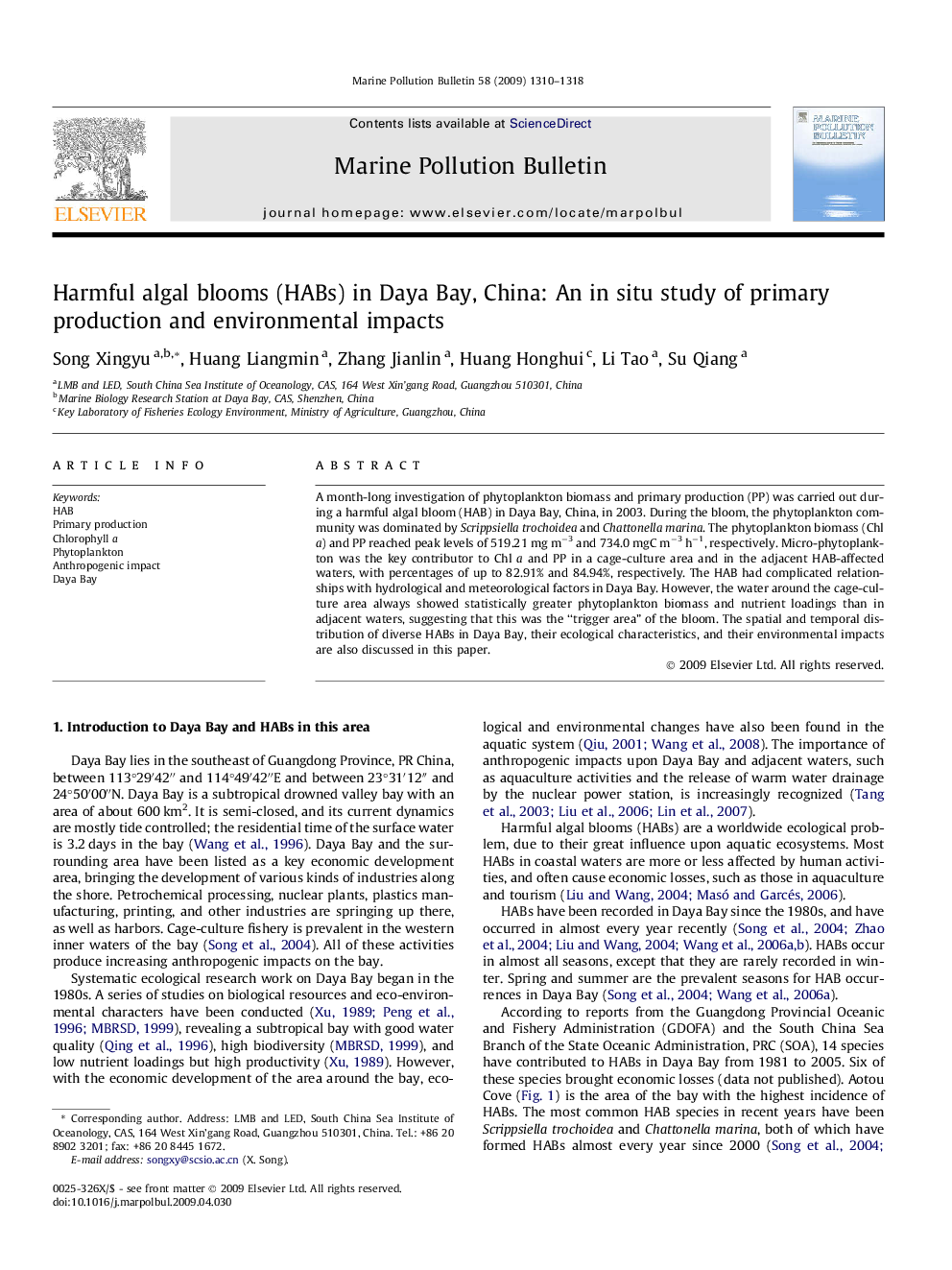| Article ID | Journal | Published Year | Pages | File Type |
|---|---|---|---|---|
| 6362854 | Marine Pollution Bulletin | 2009 | 9 Pages |
Abstract
A month-long investigation of phytoplankton biomass and primary production (PP) was carried out during a harmful algal bloom (HAB) in Daya Bay, China, in 2003. During the bloom, the phytoplankton community was dominated by Scrippsiella trochoidea and Chattonella marina. The phytoplankton biomass (Chl a) and PP reached peak levels of 519.21 mg mâ3 and 734.0 mgC mâ3 hâ1, respectively. Micro-phytoplankton was the key contributor to Chl a and PP in a cage-culture area and in the adjacent HAB-affected waters, with percentages of up to 82.91% and 84.94%, respectively. The HAB had complicated relationships with hydrological and meteorological factors in Daya Bay. However, the water around the cage-culture area always showed statistically greater phytoplankton biomass and nutrient loadings than in adjacent waters, suggesting that this was the “trigger area” of the bloom. The spatial and temporal distribution of diverse HABs in Daya Bay, their ecological characteristics, and their environmental impacts are also discussed in this paper.
Related Topics
Physical Sciences and Engineering
Earth and Planetary Sciences
Oceanography
Authors
Song Xingyu, Huang Liangmin, Zhang Jianlin, Huang Honghui, Li Tao, Su Qiang,
